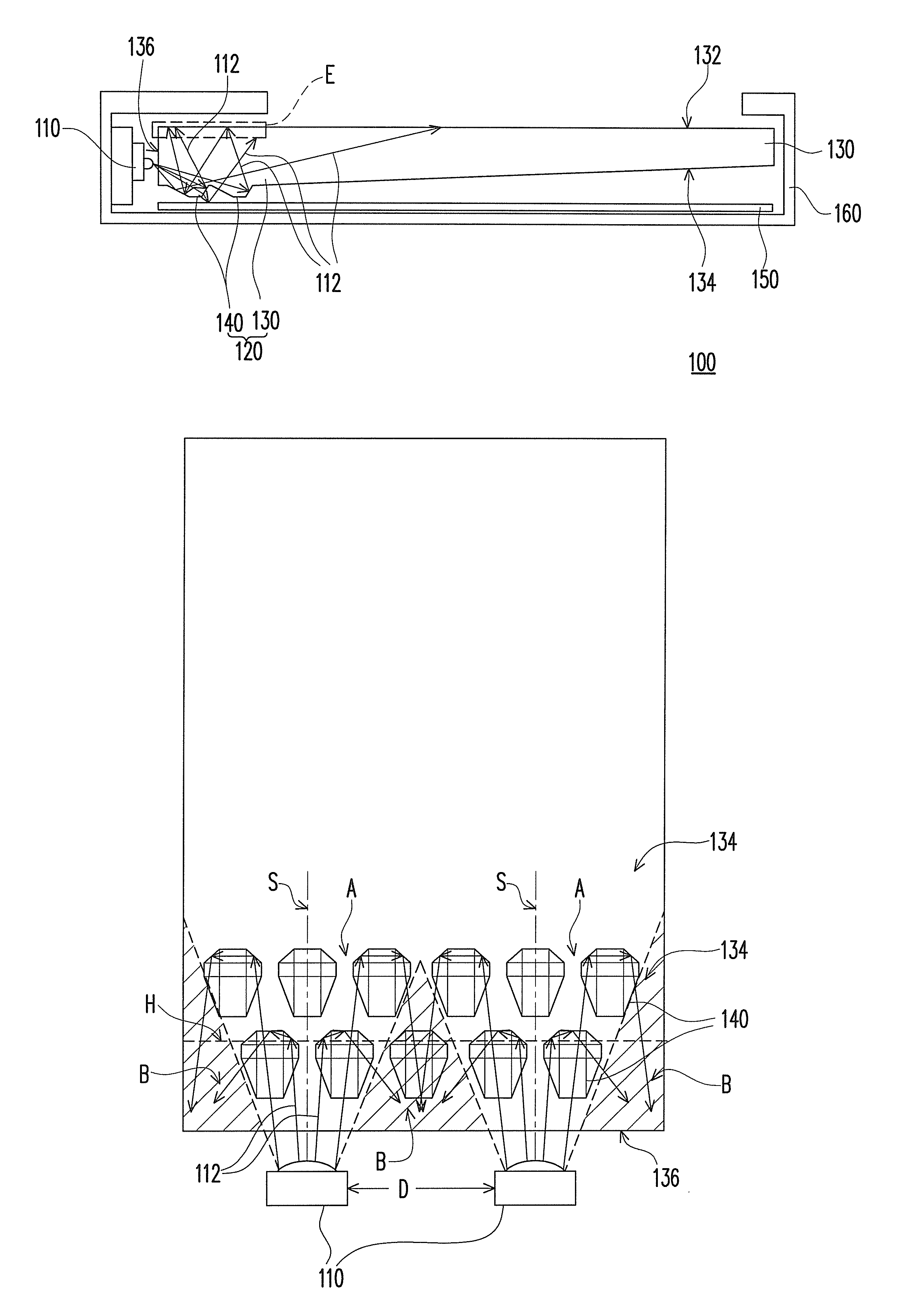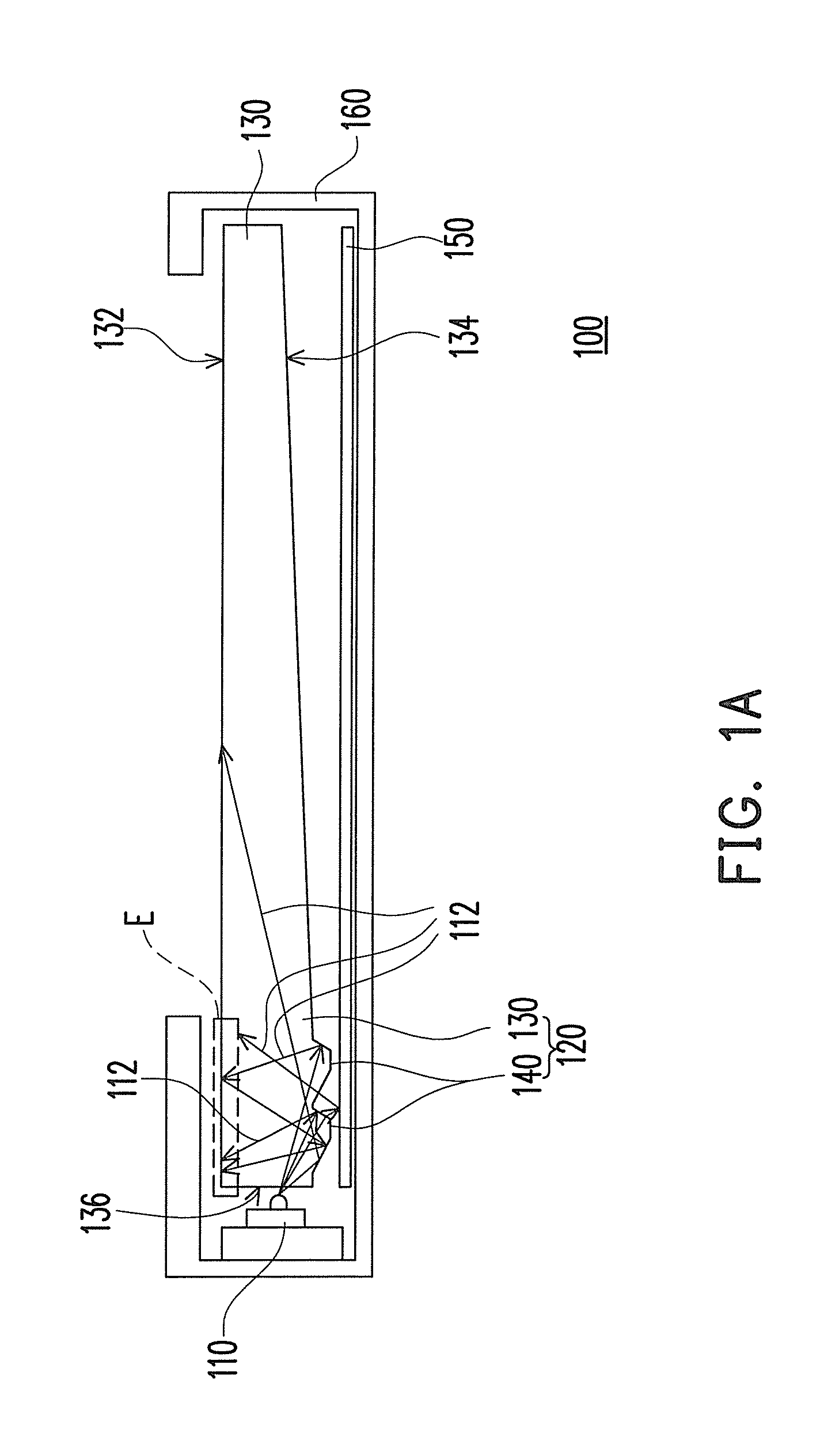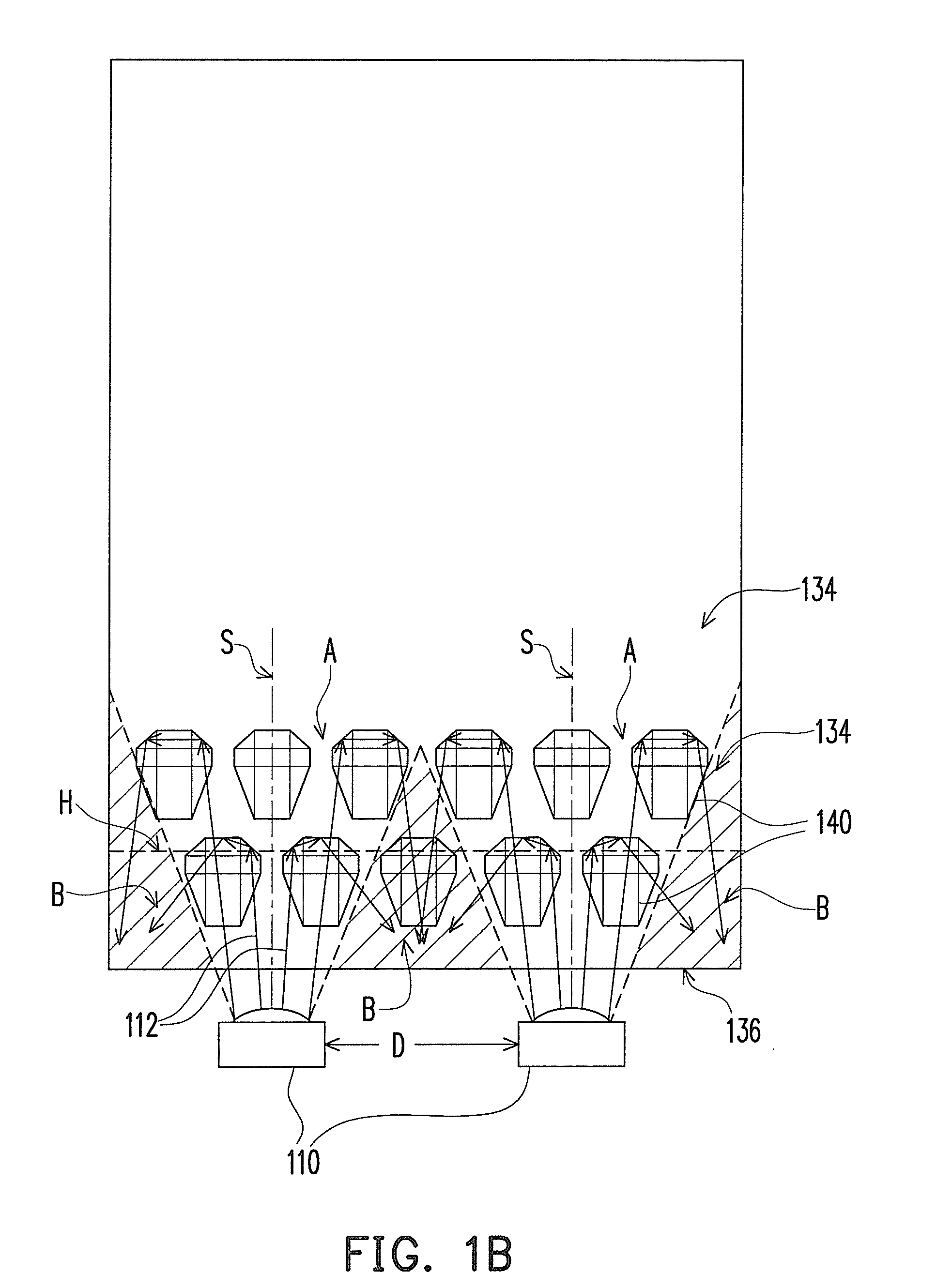Light guide plate and backlight module
a technology of backlight module and light guide plate, which is applied in the direction of planar/plate-like light guide, lighting and heating apparatus, instruments, etc., can solve the problems of uneven surface light source, hot spot worsening, and plate may not be able to provide uniform surface, etc., and achieve the effect of effectively solving the problem of hot spo
- Summary
- Abstract
- Description
- Claims
- Application Information
AI Technical Summary
Benefits of technology
Problems solved by technology
Method used
Image
Examples
first embodiment
[0033]Referring to FIG. 1A, FIG. 1B, and FIG. 2A, in the embodiment, the backlight module 100 includes a plurality of light emitting devices 110 (two are illustrated in FIG. 1B) and a light guide plate 120. Each of the light emitting devices 110 is capable of emitting a light beam 112. In the embodiment, each of the light emitting devices 110 may be a light emitting diode (LED). The light guide plate 120 is disposed in the transmission path of the light beams 112 and is capable of guiding the light beams 112 emitted by the light emitting devices 110. The light guide plate 120 includes a light-transmissive substrate 130 and a plurality of optical structures 140. The light-transmissive substrate 130 has a first surface 132, a second surface 134 opposite to the first surface 132, and an incident surface 136 connecting the first surface 132 and the second surface 134. In the embodiment, the light emitting devices 110 are disposed beside the incident surface 136 of the light-transmissive...
second embodiment
[0043]Referring to FIGS. 6A-6D, the backlight module in the embodiment is similar to the backlight module 100 described above (as illustrated in FIG. 1A and FIGS. 2A˜2D), and the difference between the two is described herein. In an optical structure 140′ of the embodiment, a first normal vector V1′ of a first TIR surface 142′ passing through the geometric center C1′ of the first TIR surface 142′ forms an angle θ1′ with the second surface 134, wherein the dotted line D1′ is parallel to the second surface 134. A second normal vector V2′ of a second TIR surface 144′ passing through the geometric center C2′ of the second TIR surface 144′ forms an angle θ2′ with the second surface 134, wherein the dotted line D2′ is parallel to the second surface 134. A third normal vector V3′ of the third TIR surface 146′ passing through the geometric center C3′ of the third TIR surface 146′ forms an angle θ3′ with the second surface 134, wherein the dotted line D3′ is parallel to the second surface 13...
third embodiment
[0044]Referring to FIG. 7, the backlight module in the embodiment is similar to the backlight module 100 described above (as illustrated in FIGS. 1A and 2A), and the difference between the two is described herein. In the backlight module provided by the embodiment, at least parts of the orthogonal projection vectors U1″ of the first normal vectors V1″ of the first TIR surfaces 142″ of the optical structures 140″ on the second surface 134 are not parallel to each other, at least parts of the orthogonal projection vectors U2″ of the second normal vectors V2″ of the optical structures 140″ on the second surface 134 are not parallel to each other, and at least parts of the orthogonal projection vectors U3″ of the third normal vectors V3″ of the optical structures 140″ on the second surface are not parallel to each other. In other words, compared with the above backlight module 100 in which the orthogonal projection vectors U1, U2, and U3 of the optical structures 140 are disposed toward...
PUM
 Login to View More
Login to View More Abstract
Description
Claims
Application Information
 Login to View More
Login to View More - R&D
- Intellectual Property
- Life Sciences
- Materials
- Tech Scout
- Unparalleled Data Quality
- Higher Quality Content
- 60% Fewer Hallucinations
Browse by: Latest US Patents, China's latest patents, Technical Efficacy Thesaurus, Application Domain, Technology Topic, Popular Technical Reports.
© 2025 PatSnap. All rights reserved.Legal|Privacy policy|Modern Slavery Act Transparency Statement|Sitemap|About US| Contact US: help@patsnap.com



